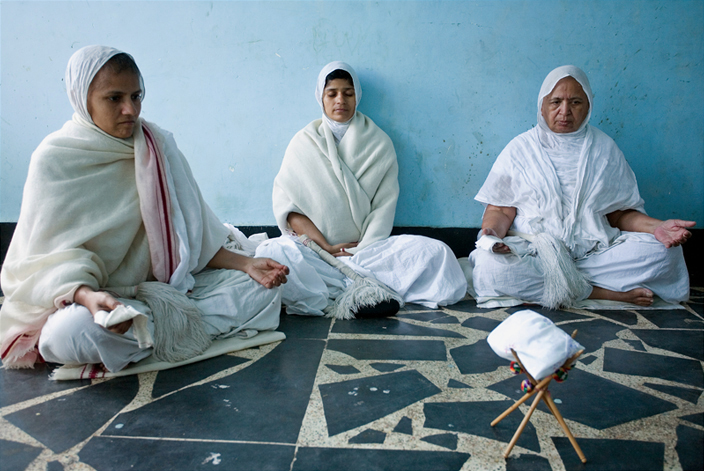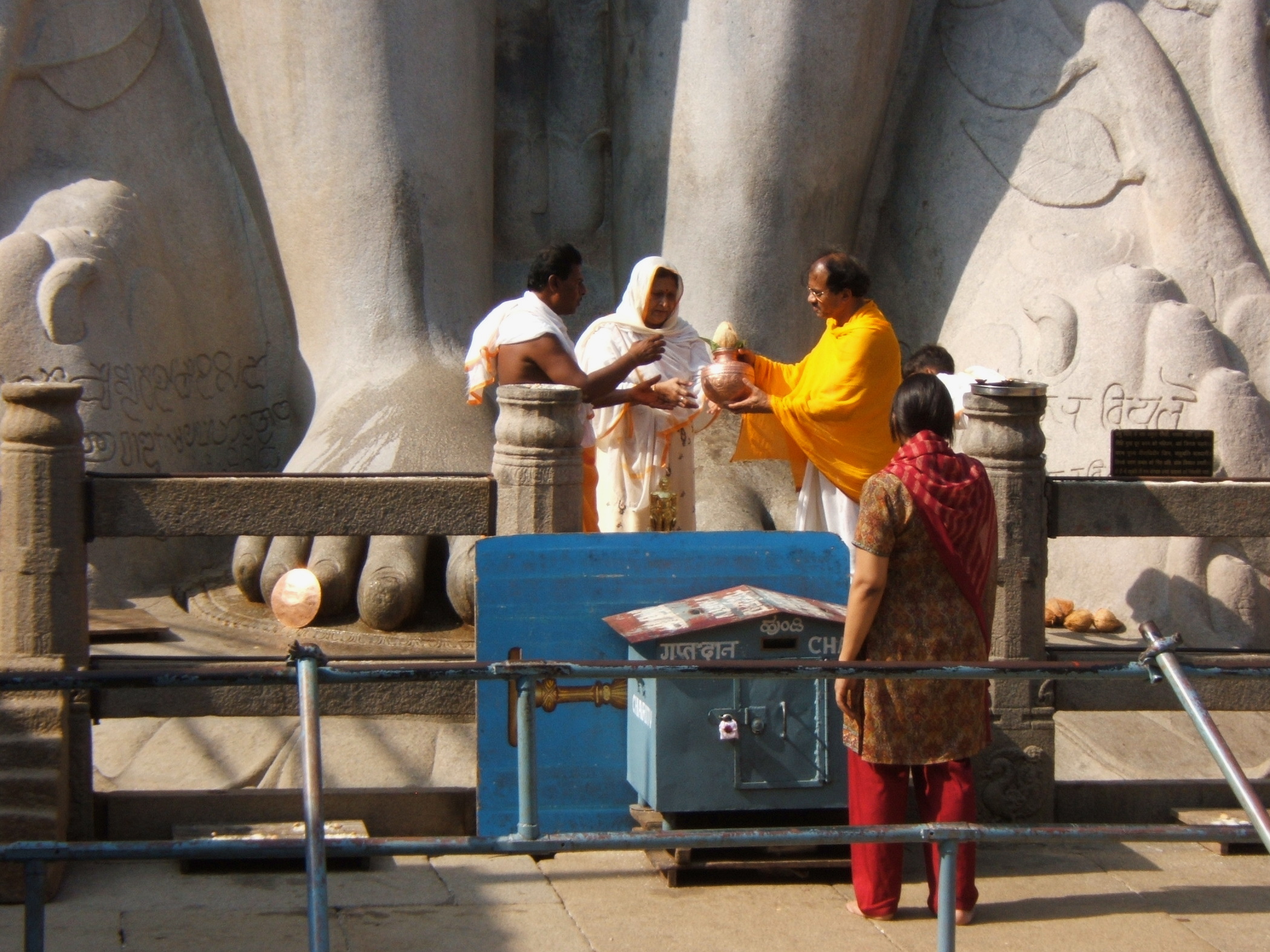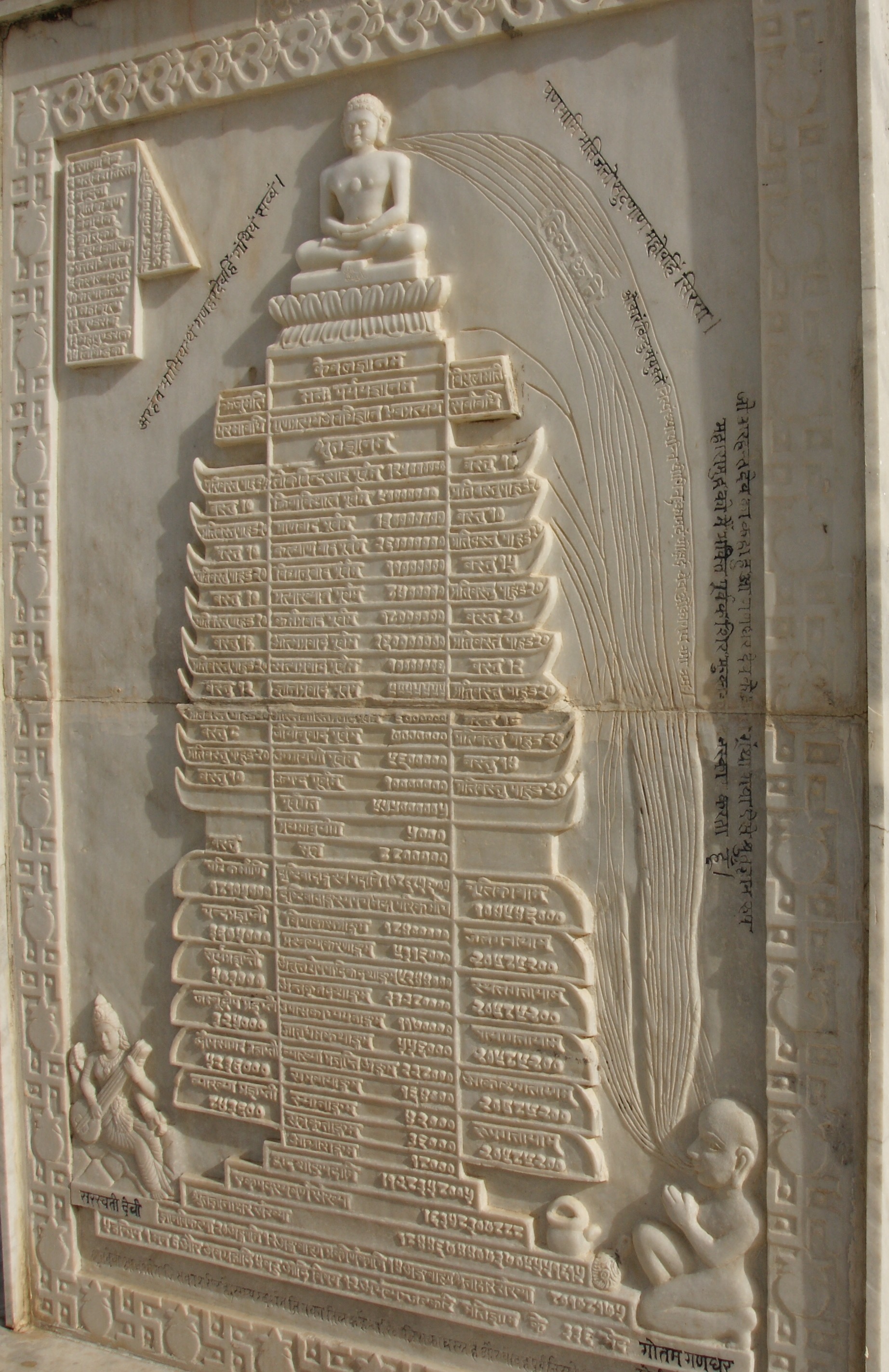|
Sangha (Jainism)
In Jainism, Sangha (Community of the pious) is a term used to refer to the fourfold community of ''Muni'' ( male ascetics), ''Aryika'' / ''Sadhvi'' (female ascetics), ''Śrāvaka'' (laymen), and ''Śrāvikā'' (laywomen). The word is also used in various other ways. Meaning Champat Rai Jain, an influential 20th century Jain writer described the ''sangha'' as "those who practise the ''dharma''", "the community of the saints", "the community of the pious" and as "the community of the faithful". Significance According to the Jain texts, the ''sangha'' will be maintained till the very end of the present strife-ridden spoke of time ('' pancham kaal''). With the end of the ''sangha'', the ''dharma'' (religion) will also end. Other Uses The word ''sangha'' has been used to refer to various lineages in the Digambara sect of Jainism. History Jain ''Sangha'' was established in Madurai in 5th century CE. See also *Jainism *Sangha in Buddhism * Sangat (Sikhism) Sangat (Punj ... [...More Info...] [...Related Items...] OR: [Wikipedia] [Google] [Baidu] |
Jainism
Jainism ( ), also known as Jain Dharma, is an Indian religions, Indian religion. Jainism traces its spiritual ideas and history through the succession of twenty-four tirthankaras (supreme preachers of ''Dharma''), with the first in the current time cycle being Rishabhadeva, whom the tradition holds to have lived millions of years ago, the twenty-third ''tirthankara'' Parshvanatha, whom historians date to the 9th century BCE, and the twenty-fourth ''tirthankara'' Mahāvīra, Mahavira, around 600 BCE. Jainism is considered to be an eternal ''dharma'' with the ''tirthankaras'' guiding every time cycle of the Jain cosmology, cosmology. The three main pillars of Jainism are ''Ahimsa in Jainism, ahiṃsā'' (non-violence), ''anekāntavāda'' (non-absolutism), and ''aparigraha'' (asceticism). Jain monks, after positioning themselves in the sublime state of soul consciousness, take five main vows: ''ahiṃsā'' (non-violence), ''satya'' (truth), ''Achourya, asteya'' (not stealing), ''b ... [...More Info...] [...Related Items...] OR: [Wikipedia] [Google] [Baidu] |
Jain Monasticism
Jain monasticism refers to the order of monks and nuns in the Jain community and can be divided into two major denominations: the ''Digambara'' and the ''Śvētāmbara''. The monastic practices of the two major sects vary greatly, but the major principles of both are identical. Five ''mahāvratas'' (Great Vows), from Mahavira's teachings, are followed by all Jain ascetics. Historians believe that a united Jain ''sangha'' (community) existed before 367 BCE, about 160 years after the ''moksha'' (liberation) of Mahavira. The community then gradually divided into the major denominations. Terminology ''Digambaras'' use the word ' for male monastics and ''aryika'' for female monastics. ''Digambara monks'' are also called ''nirgrantha'' (without bonds). ''Śvētāmbaras'' use the word ''sadhvi''s for female monastics. History Mahavira had 11 chief disciples, Indrabhuti Gautama being the most senior. Each chief disciple was made responsible for 250 to 500 monks. The Jain sangha ... [...More Info...] [...Related Items...] OR: [Wikipedia] [Google] [Baidu] |
Aryika
''Aryika'', also known as ''Sadhvi'', is a female mendicant (nun) in Jainism. History In the traditional Digambara tradition, a male human being is considered closest to the apex with the potential to achieve liberation, particularly through asceticism. Women must gain karmic merit, to be reborn as man, and only then can they achieve spiritual liberation in the Digambara sect of Jainism. This view is different from the Svetambara sect that believes that women too can achieve liberation from ''Saṃsāra'' by being mendicants and through ascetic practices. According to Svetambara Jain texts, from ''Kalpasutras'' onwards, Jainism has had more ''sadhvis'' than ''sadhus'' (female than male mendicants). In Tapa Gacch of the modern era, the ratio of sadhvis to sadhus (nuns to monks) is about 3.5 to 1. This is much higher, and in contrast to the gender ratio historically observed in Buddhism and Hinduism. Traditionally, in contrast to Svetambara, the Digambara sect has had far l ... [...More Info...] [...Related Items...] OR: [Wikipedia] [Google] [Baidu] |
Śrāvaka (Jainism)
In Jainism, the word Śrāvaka or Sāvaga (from Jain Prakrit) is used to refer the Jain laity (householder). The word ''śrāvaka'' has its roots in the word ''śrāvana'', i.e. the one who listens (the discourses of the saints). The ''tirthankara'' restores or organises the ''sangha'', a fourfold order of ''muni'' (male monastics), ''aryika'' (female monastics), '' śrāvaka''s (male followers) and ''śrāvikā''s (female followers). In Jainism, there are two kinds of votaries: *The householder (one with minor vows) *The homeless ascetic (one with major vows) According to the Jain text ''Puruşārthasiddhyupāya'': Ratnakaranda śrāvakācāra, a major Jain text, discusses the conduct of a Śrāvaka in detail. Six essentials In Jainism, six essential duties (''avashyakas'') are prescribed for a ''śrāvaka''. These help the laity in achieving the principle of ahimsa which is necessary for his/her spiritual upliftment. The six duties are: #Worship of Pañca-Parameṣṭhi ... [...More Info...] [...Related Items...] OR: [Wikipedia] [Google] [Baidu] |
Champat Rai Jain
Champat Rai Jain (6 August 1867–2 June 1942) was a Digambara Jain born in Delhi and who studied and practised law in England. He became an influential Jainism scholar and comparative religion writer between 1910s and 1930s who translated and interpreted Digambara texts. In early 1920s, he became religiously active in India and published essays and articles defending Jainism against misrepresentations by colonial era Christian missionaries, contrasting Jainism and Christianity. He founded Akhil Bharatvarsiya Digambara Jain Parisad in 1923 with the aim of activist reforms and uniting the south Indian and north Indian Digambara community. He visited various European countries to give lectures on Jainism. He was conferred with the title ''Vidya-Varidhi'' (lit. Ocean of Wisdom) by Bharata Dharma Mahamandal (The India-Religious Association). Life Champat Rai Jain was born on 6 August 1867 in Delhi, India. He was married at the age of 13. In 1892, he went to England to study law, ... [...More Info...] [...Related Items...] OR: [Wikipedia] [Google] [Baidu] |
Dharma (Jainism)
Jain texts assign a wide range of meaning to the Sanskrit ''dharma'' or Prakrit ''dhamma''. It is often translated as “religion” and as such, Jainism is called ''Jain Dharma'' by its adherents. In Jainism, the word ''Dharma'' is used to refer the following: #Religion #Dharmastikaay (the principle of motion) as a dravya (substance or a reality) #The true nature of a thing #Ten virtues like forgiveness, etc. also called ten forms of Dharma Religion Usage of the word ''dharma'' in reference to the religion. Ahimsa as Dharma According to Jain texts, Ahimsa is the greatest Dharma (अहिंसा परमॊ धर्मः hiṃsā paramo dharmaḥ "non-violence is the highest religion") and there is no religion equal to the religion of non-violence. Dharma bhāvanā Jain texts prescribe meditation on twelve forms of reflection (''bhāvanā'') for those who wish to stop the influx of ''karmas'' that extend transmigration. One such reflection is ''Dharma bhāvanā' ... [...More Info...] [...Related Items...] OR: [Wikipedia] [Google] [Baidu] |
Jain Texts
Jain literature (Sanskrit: जैन साहित्य) refers to the literature of the Jain religion. It is a vast and ancient literary tradition, which was initially transmitted orally. The oldest surviving material is contained in the canonical ''Jain Agamas,'' which are written in Ardhamagadhi, a Prakrit ( Middle-Indo Aryan) language. Various commentaries were written on these canonical texts by later Jain monks. Later works were also written in other languages, like Sanskrit and Maharashtri Prakrit. Jain literature is primarily divided between the canons of the ''Digambara'' and ''Śvētāmbara'' orders. These two main sects of Jainism do not always agree on which texts should be considered authoritative. More recent Jain literature has also been written in other languages, like Marathi, Tamil, Rajasthani, Dhundari, Marwari, Hindi, Gujarati, Kannada, Malayalam and more recently in English. Beliefs The Jain tradition believes that their religion is eternal, and the ... [...More Info...] [...Related Items...] OR: [Wikipedia] [Google] [Baidu] |
Avasarpiṇī
''Avasarpiṇī'' is the descending half of the cosmic time cycle in Jainism and the one in which the world is said to be at present. According to Jain texts the ''Avasarpiṇī'' is marked by a decline in goodness and religion. The ascending half of the cycle is called '' utsarpiṇī'', which is marked by the ascent of goodness and religion. Overview Jaina cosmology divides the worldly cycle of time (''kalpakāla'') in two parts or half-cycles (kāla) – ascending (''utsarpiṇī'') and descending (''avasarpiṇī'') – each consisting of 10 x 1 crore x 1 crore addhāsāgaropama (10 kotikotī sāgaropama). Thus, one cycle of time (''kalpakāla'') gets over in 20 ''kotikotī sāgaropama''. During the ascending period (utsarpiṇī) of the half-cycle (''kāla''), in the regions of Bharata and ''Airāvata'', there is the all-round increase in age, strength, stature and happiness of the living beings, while during the descending period (''avasarpiṇī'') of the half-cycle, ... [...More Info...] [...Related Items...] OR: [Wikipedia] [Google] [Baidu] |
Sallekhana
''Sallekhana'' (IAST: ), also known as ''samlehna'', ''santhara'', ''samadhi-marana'' or ''sanyasana-marana'', is a supplementary vow to the ethical code of conduct of Jainism. It is the religious practice of voluntarily fasting to death by gradually reducing the intake of food and liquids. It is viewed in Jainism as the thinning of human passions and the body, and another means of destroying rebirth-influencing karma by withdrawing all physical and mental activities. It is not considered as a suicide by Jain scholars because it is not an act of passion, nor does it employ poisons or weapons. After the ''sallekhana'' vow, the ritual preparation and practice can extend into years. ''Sallekhana'' is a vow available to both Jain ascetics and householders. Historic evidence such as ''nishidhi'' engravings suggest ''sallekhana'' was observed by both men and women, including queens, in Jain history. However, in the modern era, death through ''sallekhana'' has been a relatively un ... [...More Info...] [...Related Items...] OR: [Wikipedia] [Google] [Baidu] |
Madurai
Madurai ( , also , ) is a major city in the Indian state of Tamil Nadu. It is the cultural capital of Tamil Nadu and the administrative headquarters of Madurai District. As of the 2011 census, it was the third largest Urban agglomeration in Tamil Nadu after Chennai and Coimbatore and the 44th most populated city in India. Located on the banks of River Vaigai, Madurai has been a major settlement for two millennia and has a documented history of more than 2500 years. It is often referred to as "Thoonga Nagaram", meaning "the city that never sleeps". Madurai is closely associated with the Tamil language. The third Tamil Sangam, a major congregation of Tamil scholars said to have been held in the city. The recorded history of the city goes back to the 3rd century BCE, being mentioned by Megasthenes, the Greek ambassador to the Maurya empire, and Kautilya, a minister of the Mauryan emperor Chandragupta Maurya. Signs of human settlements and Roman trade links dating back to 3 ... [...More Info...] [...Related Items...] OR: [Wikipedia] [Google] [Baidu] |
Sangha
Sangha is a Sanskrit word used in many Indian languages, including Pali meaning "association", "assembly", "company" or "community"; Sangha is often used as a surname across these languages. It was historically used in a political context to denote a governing assembly in a republic or a kingdom, and has long been used by religious associations including the Buddhists, Jains and Sikhs. Given this history, some Buddhists have said the tradition of the ''sangha'' represents humanity's oldest surviving democratic institution. In Buddhism, ''sangha'' refers to the monastic community of ''bhikkhu'' (monks) and '' bhikkhuni'' (nuns). These communities are traditionally referred to as the ''bhikkhu-sangha'' or ''bhikkhuni-sangha''. As a separate category, those who have attained any of the four stages of enlightenment, whether or not they are members of the monastic community, are referred to as the ''āryasaṅgha'' ("noble Sangha"). According to the Theravada school and Nichir ... [...More Info...] [...Related Items...] OR: [Wikipedia] [Google] [Baidu] |
Sangat (Sikhism)
Sangat ( Punjabi: ਸੰਗਤ) is a Sikh term with its origin in the Sanskrit word ''sangh'', which means company, fellowship and association. In Sikh vocabulary, the word has a special connotation. It stands for the body of men and women who meet religiously, especially in the presence of the Guru Granth Sahib. It is sometimes analogous to ''Sat-Sangat'' (Fellowship of the seekers of truth) and ''Sadh-Sangat'' (Congregation of a ''Sadh or Sant''). The word sangat has been in use since the time of Guru Nanak (1469-1539). In his days and those of his nine successors, sangat referred to the Sikh brotherhood established in or belonging to a particular locality. In Sikhism there is a strong push for one to be a part of the ''Sangat'' as well as to avoid '' Ku-Sangat'' (Undesirable Sangat). Alongside ''Sangat'' is also the tradition of ''Pangat''. Use Sangat is used in the Janamsakhis, or traditional life-stories of Guru Nanak, as well as the ''hukamnamas'', or edicts issued by the Gu ... [...More Info...] [...Related Items...] OR: [Wikipedia] [Google] [Baidu] |






